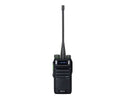
4 Common Misconceptions About Two-Way Radios
, by Joseph Gabriel, 2 min reading time

, by Joseph Gabriel, 2 min reading time

Two-way radios are popular communication tools for businesses and individuals everywhere. However, many common misconceptions surround their usage and capabilities. Let's debunk these myths so you can make a more informed purchase when investing in radio equipment!
One common misconception about two-way radios is that their communication services are entirely free. While these devices don't incur monthly service fees like cell phones, using certain channels does come with a cost. When operating on General Mobile Radio Service (GMRS) channels, users are required to obtain an FCC license. This licensing ensures proper usage and prevents overcrowding or interference on the radio spectrum. The FCC license comes with a fee, dispelling the myth that two-way radio communications are free. Operators must understand these FCC requirements and obtain the necessary licensing to avoid fines or legal issues.
Another misconception about two-way radios is that low-frequency signals are always superior due to their ability to cover longer distances. While it's true that low-frequency signals have increased aperture and can penetrate obstacles more effectively, this doesn't necessarily mean they're better.
High-frequency signals also have advantages, such as more secure communication channels and a higher capacity for data transmission. Additionally, radio repeaters can boost high-frequency signals, allowing them to cover greater distances and maintain strong connections. Consider the specific needs of your communication system when choosing between low and high-frequency signals rather than assuming one is superior to the other.
A widespread misconception is that walkie-talkies and two-way radios are interchangeable terms for the same device. While it's true that many companies market their products using both terms, they have key differences. Quality two-way radios, for instance, must have access to GMRS channels, requiring at least 2W of power to operate. On the other hand, walkie-talkies are typically lower-powered devices without the same range or capabilities.
The term "walkie-talkie" refers to handheld or portable radio devices. In contrast, two-way radios come in various shapes and sizes to suit different applications. For example, a truck two-way radio is a stationary unit designed for vehicle use. Understanding these distinctions is essential when selecting the appropriate communication tools for your needs.
By understanding these common misconceptions, you can make informed decisions when selecting and using two-way radios. Equip yourself with the knowledge to choose the right communication tools for your needs and optimize their potential. Stock up on the very best radio equipment today here at Atlantic Radio!